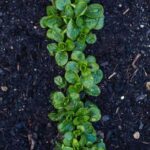Are you interested in starting a garden but worried about having limited sunlight? Shade vegetable gardening may be the perfect solution for you. This innovative gardening method allows you to grow a variety of vegetables even in areas with minimal direct sunlight. In this article, we will explore the concept of shade vegetable gardening and its benefits, as well as provide practical tips for planning, planting, and maintaining a successful shaded garden.
Shade vegetable gardening involves cultivating vegetables in areas with partial or full shade, such as under trees, next to tall buildings, or in other shaded spots in your yard. While sunlight is essential for plant growth, there are many vegetables that can thrive in shaded conditions. By understanding the unique needs of these plants and implementing proper techniques, you can enjoy a bountiful harvest from your shaded garden.
One of the significant benefits of shade vegetable gardening is the ability to make use of underutilized spaces in your yard. By growing vegetables in shaded areas, you can maximize the potential of every corner of your home, no matter how limited it may seem.
Additionally, shaded gardens often require less maintenance and water compared to traditional gardens, making them an ideal choice for busy individuals or those living in hot climates. As we delve deeper into this topic, we will discuss specific vegetables that thrive in shade and ways to prepare your garden for optimal growth.
Choosing the Right Vegetables for Shade
When it comes to shade vegetable gardening, choosing the right vegetables is crucial for a successful harvest. While many vegetables thrive in full sun, there are several options that can thrive in shaded areas as well. These shade-tolerant vegetables are not only resilient but also provide an abundance of fresh produce for your kitchen.
List of Shade-Tolerant Vegetables
Some popular shade-tolerant vegetables include leafy greens such as spinach, lettuce, and kale. These greens can handle limited sunlight and actually benefit from cooler temperatures. Additionally, root vegetables like beets, carrots, and radishes are well-suited for shaded areas as they prefer cooler soil conditions. Other options for shade vegetable gardening include herbs like parsley and cilantro, as well as certain varieties of peas and beans.
Factors to Consider
When selecting shade-tolerant vegetables for your garden, it’s important to consider factors such as the specific light conditions in your shaded area and the climate in your region. Some vegetables may still require some sunlight or may not do well in extremely hot or humid climates even if they are labeled as shade-tolerant.
It’s also important to take into account the amount of space you have available and whether certain vegetables may compete with each other for nutrients or space. By carefully considering these factors, you can make informed decisions about which vegetables to grow in your shaded garden.
Ultimately, by choosing the right combination of shade-tolerant vegetables based on these considerations, you can set yourself up for a bountiful harvest from your shade vegetable garden.
Preparing the Shaded Garden Area
When it comes to shade vegetable gardening, preparing the shaded garden area is crucial to ensure the success of your plants. Here are some tips for getting your shaded garden area ready for planting:
- Clear the area: Before preparing the soil, make sure to clear the shaded garden area of any debris, weeds, or unwanted plants that may compete with your vegetables for nutrients and sunlight.
- Improve soil quality: Shaded areas often have poor soil quality, so it’s important to enrich it with organic matter such as compost or well-rotted manure. This will help provide essential nutrients for your shade-tolerant vegetables.
- Ensure proper drainage: Since shaded areas can be more prone to moisture retention, it’s important to ensure that the soil has proper drainage. Adding organic matter and incorporating it into the soil can help improve drainage in these areas.
In addition to these preparatory steps, another key aspect to consider when preparing the shaded garden area is choosing vegetables that are suited for these conditions. With the right preparation and selection of shade-tolerant vegetables, you can create a thriving vegetable garden even in areas with limited sunlight.
Planting and Maintenance Tips
When it comes to shade vegetable gardening, choosing the right vegetables is key to a successful harvest. Some vegetables are better suited for shaded areas than others, and selecting the appropriate ones can make all the difference. Leafy greens such as spinach, lettuce, and kale are excellent choices for shade gardens, as they require less direct sunlight to thrive.
Root vegetables like radishes and beets are also suitable for growing in shaded areas. Additionally, herbs such as mint, cilantro, and chives can do well with limited sunlight.
Once you have selected the vegetables for your shade garden, it’s essential to consider factors such as temperature and moisture levels in the shaded area. Some shade-tolerant vegetables may also have specific soil requirements, so it’s important to take these into account when planning your planting strategy.
Maintaining Healthy Plants in Shaded Areas
In order to ensure that your shade-tolerant vegetables grow healthily, proper care and maintenance are crucial. When planting in shaded areas, it’s beneficial to provide extra nutrients through organic matter or compost to supplement the limited sunlight available for photosynthesis. Adequate watering is also essential for shade-grown vegetables since moist soil can help compensate for the lack of direct sunlight.
Regularly monitoring the plants for any signs of stress or nutrient deficiencies is equally important when maintaining a shade vegetable garden. Addressing any issues promptly can help prevent potential problems from escalating and ensure that your plants continue to thrive despite the limited sunlight they receive.
Maximizing Light in Shaded Gardens
While shaded areas may not receive as much sunlight as traditional gardens, there are techniques that can help maximize the light available for your shade-tolerant vegetables. One effective method is to strategically place reflective surfaces near the plant beds to bounce light onto them.
Additionally, utilizing lighter-colored mulch or ground cover can help brighten up the shaded area by reflecting more light onto the plants. Proper spacing between plants is also crucial in shaded gardens to prevent overcrowding and allow each plant access to whatever amount of light is available.
Managing Pests and Diseases in Shade Gardens
Shade vegetable gardening comes with its own set of challenges, including the increased risk of pests and diseases due to the reduced sunlight and airflow. However, with proper care and attention, it is possible to manage these issues naturally and organically.
Common pests such as aphids, slugs, and snails tend to thrive in shaded areas. Additionally, diseases like powdery mildew and downy mildew can become problematic in gardens with limited sunlight. To address these issues without resorting to chemical solutions, there are various natural methods that can be employed. For example, attracting beneficial insects like ladybugs and lacewings can help control aphid populations. Additionally, using organic mulch and ensuring proper spacing between plants can reduce the risk of fungal diseases.
It is important for shade gardeners to regularly inspect their plants for any signs of pest infestations or disease development. Early detection allows for prompt intervention, preventing the issue from spreading further. By maintaining a vigilant eye on the garden, it is possible to address problems before they escalate into major concerns.
| Pest/Disease Management | Natural/Organic Solution |
|---|---|
| Aphids | Attracting beneficial insects like ladybugs and lacewings |
| Powdery Mildew/Downy Mildew | Using organic mulch and ensuring proper plant spacing |
| Slugs/Snails | Handpicking or using barriers like copper tape |
Maximizing Light in Shaded Gardens
When it comes to shade vegetable gardening, one of the biggest challenges is maximizing the limited amount of light that reaches the plants. However, with the right techniques and strategies, it is possible to make the most of the available sunlight in shaded areas.
To maximize light in shaded gardens, consider implementing the following techniques:
- Choose vegetables that require less sunlight: Opt for leafy greens like lettuce, spinach, and kale, as well as root vegetables such as radishes and beets, which can thrive in partial shade.
- Utilize reflective surfaces: Place light-colored or reflective materials near your plants to help bounce available light onto them. This can include white stones or mulch, aluminum foil, or even strategically positioned mirrors.
- Strategic plant placement: Arrange your vegetable garden in a way that taller plants do not cast too much shade on shorter ones. Consider planting taller crops on the north side of the garden to avoid overshadowing smaller plants.
Proper spacing between plants is crucial for maximizing light in shaded gardens. When planting shade-tolerant vegetables, be sure to follow recommendations for spacing between each plant. This allows sufficient airflow and prevents overcrowding, which can lead to decreased sunlight exposure and increased risk of disease.
Ultimately, with some creativity and attention to detail, it is possible to make the most of limited sunlight in shaded areas for successful vegetable gardening. By utilizing these techniques for maximizing light, you can enjoy a thriving and productive shade vegetable garden.
Harvesting and Enjoying Shade-Grown Vegetables
Once your shade vegetable garden has produced a bountiful harvest, it’s essential to know the proper techniques for harvesting and storing your vegetables. Some common vegetables grown in shaded areas include salad greens, spinach, kale, and certain herbs like mint and parsley. These leafy greens are perfect for harvesting as baby leaves, which allows for a continuous harvest throughout the growing season.
It’s important to harvest your shade-grown vegetables at the right time to ensure the best quality and flavor. For example, leafy greens should be harvested in the morning when their water content is at its highest, ensuring crispness and freshness. Storing these vegetables properly is also crucial for maintaining their quality. Storing them in perforated plastic bags or containers in the refrigerator can help prolong their shelf life.
Enjoying the Produce From Your Shade Vegetable Garden
After harvesting and storing your shade-grown vegetables, it’s time to enjoy the fruits of your labor. These freshly picked vegetables are perfect for adding nutrition and flavor to your meals. Whether you use them in salads, stir-fries, smoothies, or as accompaniments to main dishes, there are countless ways to incorporate shade-grown vegetables into your diet.
In addition to providing healthy food for you and your family, shade vegetable gardening can also be a source of pride and satisfaction. There is something incredibly rewarding about cultivating a thriving garden in less than ideal conditions. The sense of accomplishment that comes from growing your own food in shaded areas is truly unparalleled. So take some time to savor the taste of success as you indulge in the flavors of your home-grown shade vegetables.
| Vegetable | Best Time for Harvest | Storage Tips |
|---|---|---|
| Salad Greens | Morning (when water content is highest) | Store in perforated plastic bags or containers in the refrigerator |
| Spinach |
Success Stories and Inspiration
In conclusion, shade vegetable gardening offers a unique and rewarding way to grow your own produce, even in limited sunlight. By choosing the right vegetables for shade, preparing the soil properly, and implementing strategic planting and maintenance techniques, it is possible to create a thriving garden in shaded areas. Additionally, managing pests and diseases in shade gardens, as well as maximizing available light, are crucial aspects of successful shade vegetable gardening.
One of the most inspiring things about shade vegetable gardening is the opportunity it provides for creativity and problem-solving. Many gardeners have found innovative ways to maximize available light by using reflective surfaces or strategically placing mirrors to redirect sunlight. Additionally, success stories from shade gardening enthusiasts demonstrate the satisfaction and pride that comes from overcoming the challenges of growing vegetables in shaded areas.
Ultimately, while there may be some limitations to shade vegetable gardening, with careful planning and attention to detail, it is possible to enjoy a bountiful harvest of fresh, homegrown produce even in areas with limited sunlight. Whether you are growing vegetables in the shadow of buildings or trees, with patience and perseverance, you can create a beautiful and productive shade vegetable garden that brings joy and nourishment throughout the growing season.
Frequently Asked Questions
What Vegetables Can I Grow in the Shade?
There are several vegetables that can be grown in the shade, including leafy greens like spinach, kale, and lettuce. Other options include root vegetables such as radishes, beets, and carrots, as well as certain herbs like mint and cilantro.
What Vegetable Needs the Least Amount of Sunlight?
One vegetable that doesn’t require a lot of sunlight is the mushroom. Unlike plants that use sunlight for photosynthesis, mushrooms are fungi that thrive in dark, damp environments. This makes them an ideal option for shady areas in a garden or even indoors.
What Vegetables Only Need 4 Hours of Sun?
Some vegetables only need around 4 hours of sun each day to grow successfully. Examples of these “partial sun” or “part shade” vegetables include broccoli, cauliflower, peas, and Brussels sprouts. While they may not produce as abundantly as those with more sun exposure, they can still thrive with less sunlight.

If you’re looking to get into vegetable gardening, or are just looking for some tips on how to make your current garden better, then you’ve come to the right place! My name is Ethel and I have been gardening for years. In this blog, I’m going to share with you some of my best tips on how to create a successful vegetable garden.





